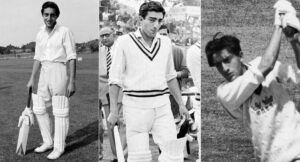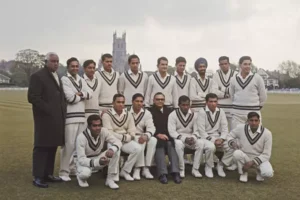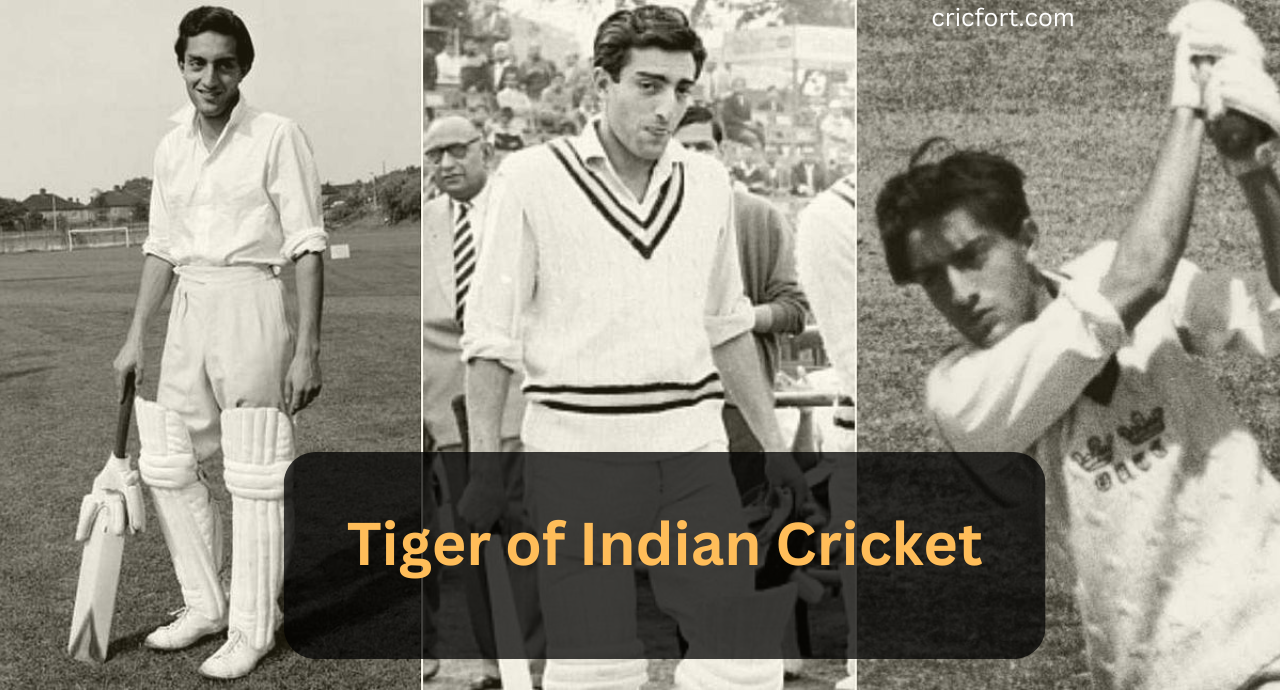Who is the Tiger of Cricket in India?
Cricket in India is more than just a sport—it’s a passion, a cultural phenomenon that unites the country in a way few other things can. Over the decades, India has produced a number of cricketing legends, players who have left an indelible mark on the game and in the hearts of millions. One such legend, whose influence transcends the sport, is Mansoor Ali Khan Pataudi, affectionately known as the “Tiger of Cricket” in India.
The Early Life of a Cricketing Royal
Mansoor Ali Khan Pataudi was born on January 5, 1941, into the royal family of Pataudi, a princely state during British India, located in present-day Haryana. His father, Iftikhar Ali Khan Pataudi, was also a distinguished cricketer who played for both England and India, making Pataudi Jr.’s cricketing pedigree undeniable from the start. However, his journey to becoming the Tiger of Indian cricket was not just about privilege but was marked by resilience, determination, and a deep love for the game.
Pataudi, often referred to as “Tiger” by his peers and fans, was educated at the prestigious Winchester College in England, where he honed his cricketing skills. He was a natural talent, displaying an aggressive style of play that set him apart even during his school days. His education continued at Balliol College, Oxford, where his cricketing prowess caught the eye of selectors, and he was soon captaining the Oxford University team.
The Accident That Shaped a Legend
At the age of 20, just as Pataudi was beginning to make waves in the cricketing world, tragedy struck. In 1961, while driving in England, Pataudi was involved in a serious car accident that left him with permanent damage to his right eye. For any cricketer, losing vision in one eye would likely signal the end of their career, but Pataudi was no ordinary cricketer.

Doctors told him that his cricketing days were over, but Pataudi was determined to prove them wrong. He returned to the game with a singular focus, training himself to adapt to his new reality. He had to relearn how to judge distances and angles with just one good eye, a feat that still baffles many in the cricketing world. Despite the immense challenge, Pataudi’s form did not falter, and he soon found himself making his Test debut for India in December 1961 against England.
The Youngest Captain in the World
Pataudi’s rise in Indian cricket was meteoric. In 1962, following a serious injury to then-captain Nari Contractor, Pataudi was named captain of the Indian cricket team. At just 21 years and 77 days old, he became the youngest captain in the history of Test cricket, a record that stood for over 40 years until it was broken by Tatenda Taibu of Zimbabwe in 2004.
Taking charge of the Indian team at such a young age, especially after the trauma of his accident, showcased Pataudi’s resilience and mental strength. He was not just a player but a leader, one who would go on to redefine Indian cricket. At a time when Indian cricket was still finding its feet in the international arena, Pataudi brought a fresh approach, one that emphasized aggression, confidence, and a never-say-die attitude.
A Captain Ahead of His Time

Pataudi’s captaincy is often credited with laying the foundation for the modern Indian cricket team. Under his leadership, India began to play with a newfound sense of pride and self-belief. He encouraged his players to think beyond individual performances and focus on team success, a mindset that was not very common in Indian cricket at the time.
One of Pataudi’s most significant contributions was his emphasis on spin bowling. Recognizing India’s strength in spin, he promoted spinners like Bishan Singh Bedi, E.A.S. Prasanna, and B.S. Chandrasekhar, who would go on to become legends in their own right. Pataudi’s strategic acumen in utilizing India’s spin resources effectively, particularly on home soil, was a key factor in India’s success during his tenure.
Despite his impaired vision, Pataudi was an elegant batsman known for his wristy strokes and an aggressive approach. He scored 2,793 runs in 46 Test matches at an average of 34.91, with six centuries. His most memorable innings came in 1964 at Headingley, where he scored a brilliant 148 against England, guiding India to a historic draw—a performance that epitomized his fighting spirit and ability to lead from the front.
Beyond Cricket: The Cultural Icon
Mansoor Ali Khan Pataudi was more than just a cricketer; he was a cultural icon. His royal lineage, combined with his cricketing prowess, made him a figure of fascination both on and off the field. His marriage to Sharmila Tagore, one of Bollywood’s leading actresses, only added to his allure. Together, they were the quintessential power couple of the 1960s and 70s, embodying the convergence of sports, royalty, and cinema—three of India’s greatest passions.

Pataudi’s influence extended beyond the cricket field. He was known for his elegance, both in his demeanor and his cricketing style. He carried himself with a regal grace, yet his approach to the game was marked by a fierce competitiveness. His ability to remain calm under pressure and his knack for inspiring his team earned him immense respect from his peers and opponents alike.
The Lasting Legacy of the Tiger
Even after his retirement from cricket in 1975, Pataudi continued to contribute to the sport in various capacities. He served as an administrator, selector, and mentor, sharing his wealth of knowledge and experience with future generations of cricketers. His insights into the game, particularly his understanding of leadership and strategy, were highly valued by those who had the privilege of working with him.
Pataudi’s impact on Indian cricket is perhaps best reflected in the way he transformed the team’s mentality. Before his captaincy, Indian cricket was often seen as timid and lacking in self-belief. Pataudi changed that perception, instilling a sense of pride and aggression that would become hallmarks of the Indian cricket team in the years to come.
When Pataudi passed away on September 22, 2011, at the age of 70, the cricketing world mourned the loss of a true legend. Tributes poured in from all corners of the globe, with many highlighting his contributions not just as a player but as a visionary leader who had shaped the future of Indian cricket.
Conclusion
Mansoor Ali Khan Pataudi’s story is one of resilience, leadership, and an unyielding passion for the game of cricket. Despite the obstacles he faced, including a career-threatening injury, he rose to become one of India’s greatest cricketing icons. His legacy as the “Tiger of Cricket” is not just in the records he set or the matches he won, but in the indomitable spirit he brought to the Indian cricket team.
Pataudi’s influence continues to be felt in the ethos of Indian cricket, where aggression, confidence, and a fighting spirit are now the norm rather than the exception. He was a man who led by example, showing that even in the face of adversity, one can achieve greatness. The Tiger of Indian cricket may no longer be with us, but his legacy roars on, inspiring future generations to take on the world with courage and conviction.


